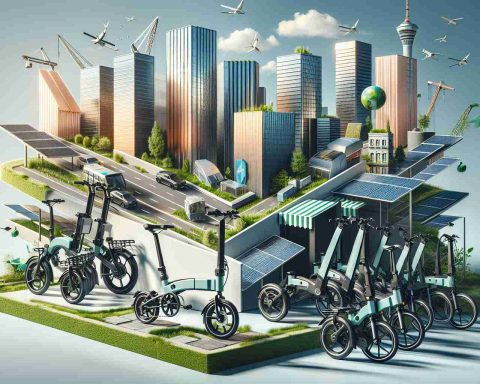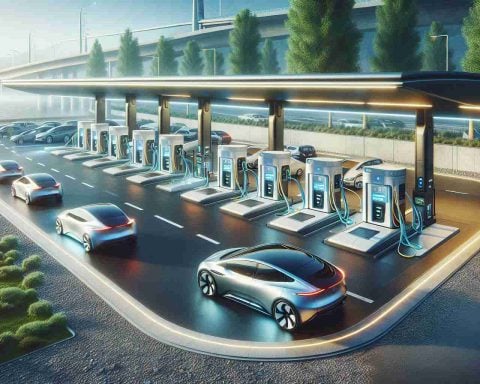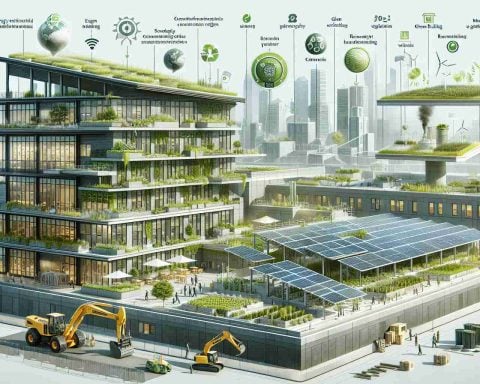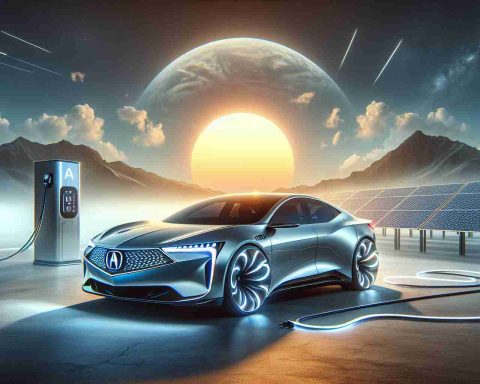- Fluence launches Smartstack, a cutting-edge battery energy storage system (BESS), enhancing energy density by 30%.
- Smartstack features a modular architecture with up to 7.5MWh capacity, utilizing 300Ah battery cells.
- Innovative design allows Battery Pods to be stacked on a Smart Skid, integrating advanced cooling and control systems.
- Smartstack incorporates advanced safety features to prevent and mitigate thermal events, promoting resilience and reliability.
- Fluence emphasizes regional component sourcing to enhance competitiveness and support local economies, particularly in the U.S.
- CEO Julian Nebreda describes this launch as a “generational change,” signaling a pivotal milestone for Fluence.
- Smartstack reflects Fluence’s commitment to sustainable energy innovation amid global energy transitions.
In a world increasingly driven by the pulse of renewable energy, innovation in storage technology is pivotal. Fluence, a leader in energy storage solutions, is setting a bold course with its latest launch—Smartstack, a cutting-edge battery energy storage system (BESS) promising transformative industry impact.
Picture a system integrating sleek design with superior efficiency, offering customers a groundbreaking 30% hike in energy density. Fluence aims to reshape the landscape with Smartstack’s modular architecture, accommodating vast projects with up to 7.5MWh capacity using robust 300Ah battery cells.
The real magic unfolds in Smartstack’s meticulous design. Customers can stack Battery Pods on a sophisticated Smart Skid, integrating top-tier cooling and control systems. This innovative configuration ensures seamless maintenance, as components are effortlessly interchangeable, adhering to Fluence’s vision of flexibility and efficiency.
Amid increasing attention on high energy density amidst global energy transitions, Smartstack shines bright by embedding advanced safety features, preventing and mitigating thermal events. Mark Berger, Fluence’s VP, champions these features for fostering resilience and reliability during energy storage.
Against the backdrop of intensified competition, particularly from Chinese markets, Fluence’s strategic pivot includes regional component sourcing, boosting local economies, especially in the U.S., strengthening its competitive edge. CEO Julian Nebreda underscores this release as a “generational change,” marking a pivotal milestone in Fluence’s journey.
Facing evolving market dynamics and fiscal challenges, Fluence’s ambitious expansion with Smartstack reflects its commitment to sustainable energy innovation. As we embark on an era defined by clean energy, Fluence’s Smartstack stands as a beacon of efficient design and high-performance technology, promising profound implications for the future of energy storage.
Is Smartstack by Fluence the Future of Energy Storage? Discover the Possibilities!
How-To Steps & Life Hacks for Implementing Smartstack
When considering the implementation of Smartstack, there are several steps and tips to optimize the system:
1. Assessment of Project Needs: Evaluate the energy requirements and existing infrastructure to determine the appropriate configuration of Smartstack modules.
2. Design Integration: Work with Fluence-certified engineers to design the layout. Consider integrating Smart Skid systems to facilitate cooling and control.
3. Installation and Setup: Follow Fluence’s guidelines for safe installation, ensuring all components are securely connected and operational.
4. Monitoring and Maintenance: Leverage Smartstack’s advanced monitoring features to track system performance and plan maintenance schedules, utilizing the ease of swapping out components as needed.
5. Optimization: Regularly update software and firmware to ensure peak performance and integrate advanced safety features to prevent thermal events.
Real-World Use Cases
Smartstack’s innovative design makes it ideal for various applications:
– Utility-Scale Projects: Its large energy density and capacity make it perfect for utility companies seeking sustainable grid solutions.
– Microgrids: Integrating Smartstack can optimize energy storage, ensuring reliable power supply for remote areas.
– Renewable Energy Integration: Pair with solar or wind farms to store excess energy, making renewable sources more efficient.
Market Forecasts & Industry Trends
The energy storage market is projected to grow significantly:
– Exponential Growth: According to a report by BloombergNEF, energy storage installations will surge to 358 GW by 2030, driven by falling costs and regulatory support.
– Regional Emphasis: With regional sourcing in the U.S., Fluence is poised to capitalize on government incentives and localized demand.
Reviews & Comparisons
Smartstack positions itself against competitors with:
– Higher Energy Density: Offering a 30% increase, it surpasses many existing setups.
– Flexibility: Modular design is a standout feature, allowing for scalable solutions.
Controversies & Limitations
While promising, Smartstack faces challenges:
– Competition: Fierce competition from Chinese markets poses pricing pressures.
– Local Sourcing Compatibility: The success of regional sourcing strategies hinges on geopolitical stability and supply chain resilience.
Features, Specs & Pricing
– Capacity: Up to 7.5 MWh with 300Ah battery cells.
– Efficiency: Enhanced through sophisticated cooling and control systems.
– Pricing: While specific prices vary by project size, competitive pricing strategies aim to offer attractive returns on investment.
Security & Sustainability
– Advanced Safety: Features to prevent thermal events and ensure operational resilience.
– Sustainability: Emphasis on renewable sourcing and reducing carbon footprint.
Insights & Predictions
Fluence’s strategic focus aligns with global trends:
– Localized Manufacturing: Will likely become an industry standard to overcome logistical challenges and improve sustainability.
– Technological Integration: Continuous advancements in AI and IoT are expected to further enhance storage systems’ efficiency.
Pros & Cons Overview
Pros:
– High energy density
– Scalable, modular design
– Robust safety features
Cons:
– Competitive landscape pressure
– Potential supply chain vulnerabilities due to geopolitical influences
Actionable Recommendations
For those considering Smartstack, here are quick tips:
– Evaluate Energy Needs: Ensure the system matches your requirements.
– Plan for Upgrades: Incorporate flexibility for future scaling of storage solutions.
– Leverage Incentives: Explore financial incentives that may apply to regional component sourcing and renewable energy integration.
Explore more about energy storage solutions by visiting Fluence.
These insights provide a comprehensive understanding of Smartstack’s potential in the evolving landscape of energy storage, equipped to meet the growing demands of sustainable energy projects worldwide.













